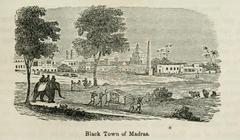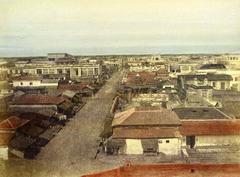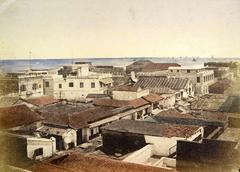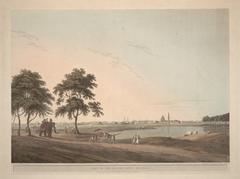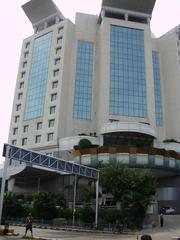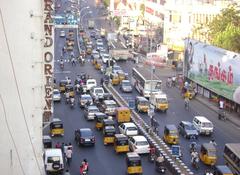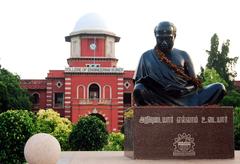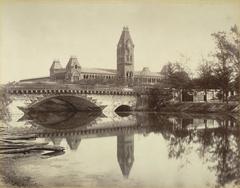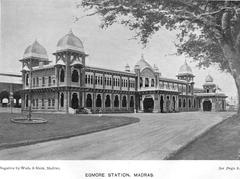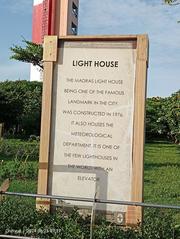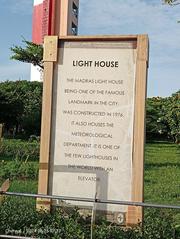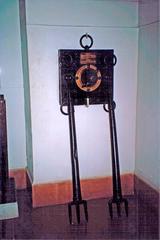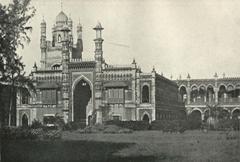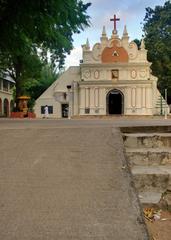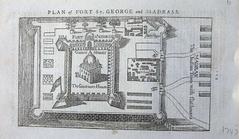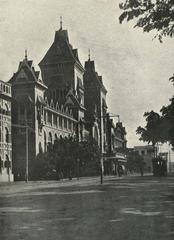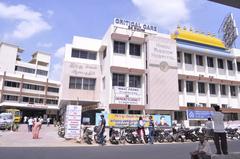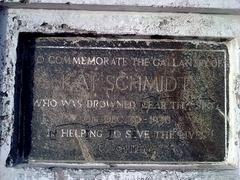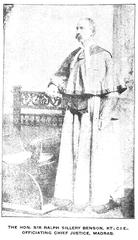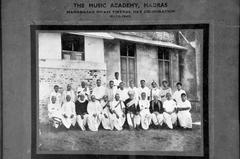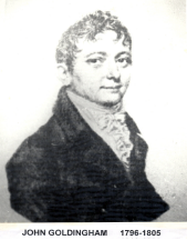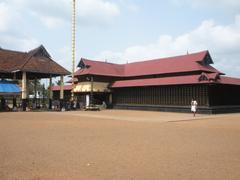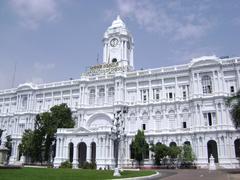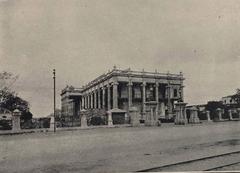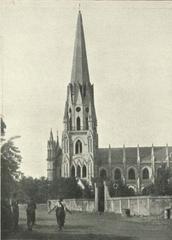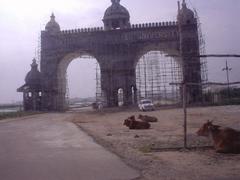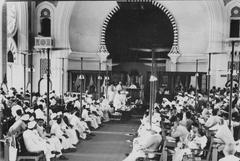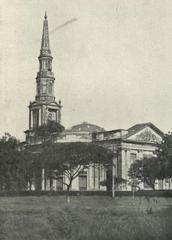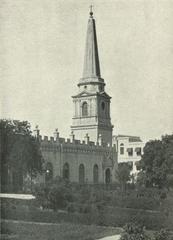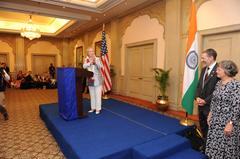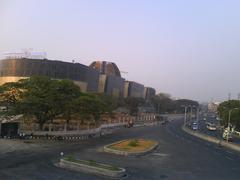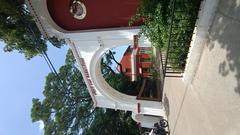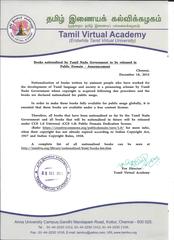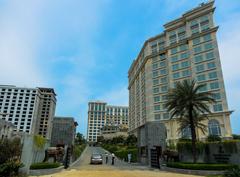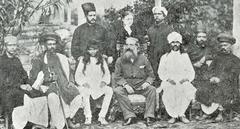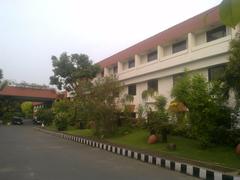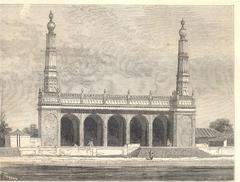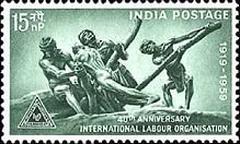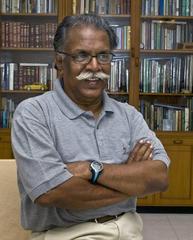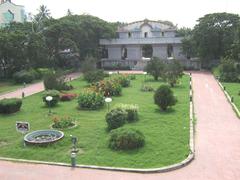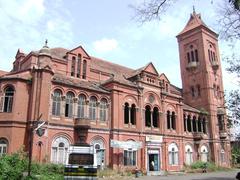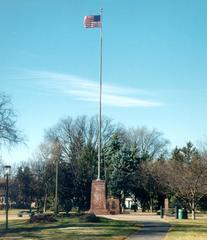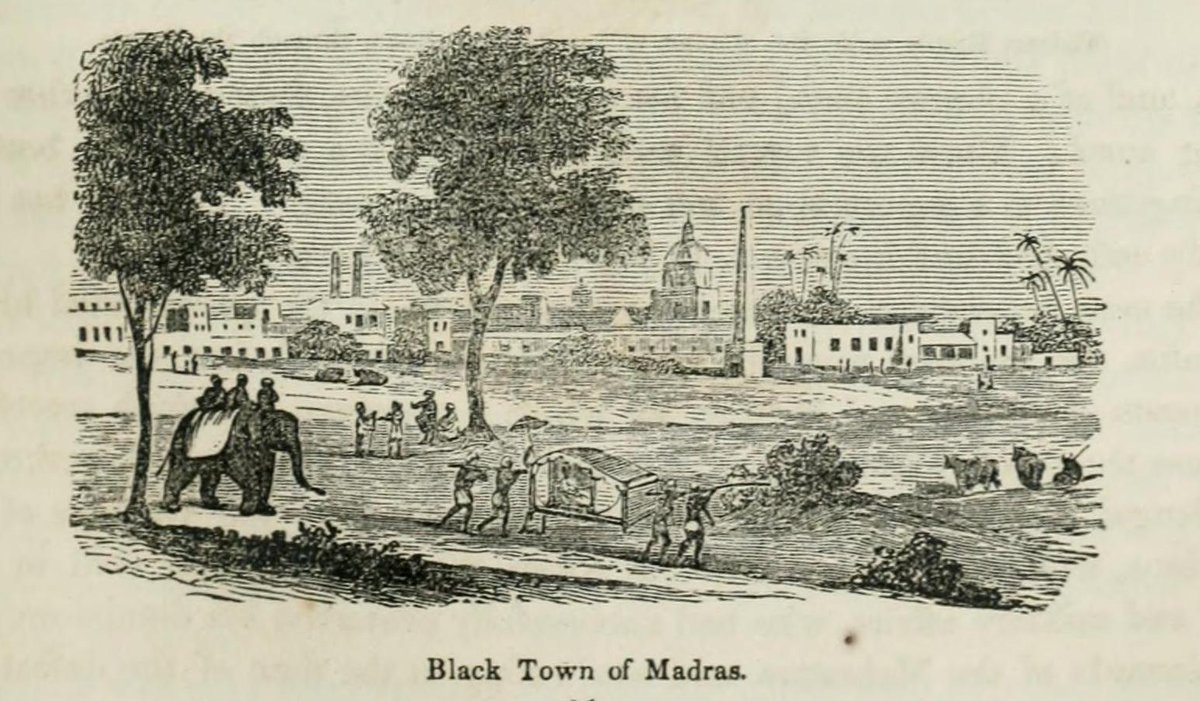
George Town Chennai Historical Sites Visiting Guide
Date: 14/06/2025
Introduction
George Town, in the heart of Chennai, is the city’s oldest and most historically significant district. Its origins as “Black Town,” adjacent to the British “White Town” and Fort St. George, laid the foundation for Chennai’s urban, commercial, and cultural evolution. Today, George Town’s streets are a living testament to centuries of trade, migration, and multicultural exchange, offering a rich blend of colonial architecture, vibrant markets, and diverse communities. Whether you are a history enthusiast, a foodie, or a cultural explorer, this guide provides practical information and curated insights for a rewarding visit to George Town (Chennai Central, Chennai Tourism, Madras Inherited).
Contents
- Historical Overview
- Early Origins and Colonial Foundations
- Evolution Through Colonial Turbulence
- Renaming and Modern Identity
- Visiting Information: Hours, Tickets & Accessibility
- Major Attractions: Details & Tips
- Accessibility
- Travel Tips
- Nearby Attractions
- Cultural and Community Life
- Architectural Heritage: Notable Landmarks
- Urban Transformation & Preservation
- Visuals and Media
- Frequently Asked Questions (FAQ)
- Conclusion & Call to Action
- Sources
Historical Overview
Early Origins and Colonial Foundations
George Town’s history began in 1640, when the British East India Company constructed Fort St. George—the first English fortress in India. The area north of the fort, known as “Black Town,” became a thriving center for Indian merchants, artisans, and various immigrant communities, including Armenians, Portuguese, and Jews. The British “White Town” and Indian “Black Town” were physically divided, highlighting the colonial social order (The Hindu).
Evolution Through Colonial Turbulence
The mid-18th century brought upheaval, including a brief French occupation (1746–1749) and the destruction of the original Black Town. The British rebuilt further north, marking boundaries that survive today, such as the pillar at Dare House in Parry’s Corner. George Town flourished as a commercial nucleus, hosting merchants from across India and the world.
Renaming and Modern Identity
In 1911, Black Town was renamed George Town to honor King George V’s coronation. Throughout the 20th century, it remained Chennai’s commercial heart, even as the city’s business district shifted south. Areas like Sowcarpet and Mint Street continue as vibrant trade hubs (Madras Inherited).
Visiting Information: Hours, Tickets & Accessibility
Major Attractions: Details & Tips
-
Fort St. George
- Hours: 9:00 AM – 5:00 PM (Closed Fridays)
- Tickets: INR 5 (Indian nationals), INR 300 (foreigners), free for children under 15 (Chennai Tourism)
- Highlights: Fort Museum, St. Mary’s Church (built 1680), colonial ramparts
- Tips: Guided tours recommended for historical context
-
Madras High Court
- Admire the Indo-Saracenic façade from outside; interior access is restricted.
-
Armenian Church
- Hours: 8:00 AM – 6:00 PM; free entry
- Highlights: Six historic bells, tranquil atmosphere
-
Kalikambal & Kachaleswarar Temples
- Open daily from early morning to evening; no entry fee
-
Sowcarpet & Mint Street
- Bustling from 9:00 AM – 8:00 PM; ideal for street food and shopping
-
Dare House & Sudharshan Building
- Landmark exteriors viewable anytime
Accessibility
George Town is well-connected by public transport:
- Train: Chennai Beach and Chennai Central stations are nearby.
- Bus: Broadway depot serves numerous routes.
- Metro: Close by, with easy connections.
The area’s narrow, bustling streets are best explored on foot, though they can be crowded and uneven. Wheelchair access is limited in older structures; plan ahead if mobility is a concern.
Travel Tips
- Best Time to Visit: November–February for pleasant weather; early mornings or late afternoons to avoid heat and crowds.
- Language: Tamil is predominant, but English and Hindi are widely understood.
- Dress Code: Modest attire is recommended, especially at religious sites.
- Safety: Generally safe, but stay alert in crowds and keep valuables secure.
- Photography: Permitted in most public spaces; check for restrictions at religious or government sites.
- Guided Tours: Local heritage walks provide valuable context and access to hidden gems.
Nearby Attractions
- Marina Beach: A short drive away for a refreshing seaside experience.
- Ripon Building: Colonial-era civic landmark.
- Kapaleeshwarar Temple: Famous Dravidian-style temple (outside George Town).
- Parry’s Corner: Commercial and transport hub.
- Kothwal Chavadi: Formerly Asia’s largest fruit and vegetable market, still a trading area with historic warehouses.
Cultural and Community Life
George Town is a mosaic of communities: Tamils, Telugus, Marwaris, Gujaratis, Parsis, Anglo-Indians, Armenians, and more. This diversity is reflected in languages, festivals, religious sites, and culinary traditions. Street life is vibrant, with artisans producing crafts, bustling bazaars like NSC Bose Road and Mint Street, and a dynamic food scene spanning chaat, sweets, and South Indian classics (Chennai Central).
Architectural Heritage: Notable Landmarks
- Fort St. George: The city’s colonial core, housing the Legislative Assembly and a museum.
- Madras High Court: Striking red Indo-Saracenic structure, one of the world’s largest judicial complexes.
- Pachaiyappa’s Hall: Modeled after Athens’ Temple of Hephaestus, a hallmark of Chennai’s political and educational history (The Hindu).
- Law College: Located on the original Black Town site.
- Armenian Church: 18th-century landmark with famous bells.
- General Post Office: Functional colonial building.
- Kandaswamy Temple & Masjid-e-Mamoor: Major religious landmarks showcasing pluralism.
Urban Transformation & Preservation
George Town’s urban fabric reveals layers of indigenous settlement, colonial planning, and post-independence growth. While thriving markets and heritage structures endure, the area faces challenges: congestion, aging infrastructure, and neglect of historic buildings. Local groups like Madras Inherited run heritage walks and advocate for conservation, recognizing heritage tourism as a tool for revitalization (Academia.edu, Madras Inherited).
Visuals and Media
For more visuals, virtual tours, and maps, visit official tourism sites or download the Audiala app.
Frequently Asked Questions (FAQ)
Q: What are the main visiting hours for George Town attractions?
A: Most attractions and markets are open from 9:00 AM to 6:00 PM. Fort St. George is open 9:00 AM–5:00 PM (closed Fridays).
Q: Are entry tickets required?
A: Fort St. George charges a nominal fee (INR 5 for Indians, INR 300 for foreigners). Most other sites are free.
Q: How do I get to George Town?
A: Easily accessible by Chennai Central/Beach railway stations, Broadway bus depot, and Chennai Metro.
Q: Are guided tours available?
A: Yes, heritage walks and guided tours are offered by local heritage groups and tourism operators.
Q: Is photography allowed?
A: Generally in public spaces; check for restrictions at museums and religious sites.
Q: Is George Town safe for solo travelers?
A: Yes, though caution is advised in crowded areas and after dark.
Conclusion & Call to Action
George Town is a captivating blend of history, culture, commerce, and community. From colonial bastions and historic temples to vibrant markets and legendary eateries, it offers an immersive Chennai experience. Plan your trip using this guide and consider joining a guided heritage walk or food tour for deeper insights.
Sources and Further Information
- George Town Chennai: A Complete Visitor’s Guide to History, Culture, and Attractions, 2025 (Chennai Central)
- Exploring George Town: Visiting Hours, Tickets, and Chennai’s Historic Heart, 2025 (The Hindu)
- George Town Historical Insights, Madras Inherited, 2025 (Madras Inherited)
- Fort St. George and Chennai Tourism, 2025 (Chennai Tourism)
- Chennai Central History and Commerce, 2025 (Chennai Central)
- Cultural Heritage and Tourism in Chennai, Academia.edu, 2025 (Academia.edu)
